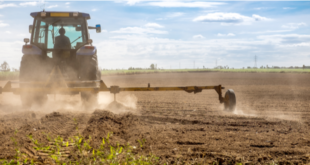An order addressing the serious contamination of farming areas brought about by over application of fertilizers and pesticides was recently signed by the Central Coast Regional Water Quality Control Board (CCRWQCB). The order continues the 2012 monitoring and reporting requirements for nitrate and pesticides while expanding the number of ranches included in the requirements.
The new order will require fertilizer application reporting for some 1,700 farms and ranches, compared to 600 in the previous order.
While most of the specifications in the order are the same as those in the 2012 order, there are some significant changes. Extensive outreach and dialog between Water Board staff and multiple stakeholders — including farm groups, environmental and social justice representatives along with data and information analyses – have helped determine the changes from the previous order.
Nitrate pollution of drinking water supplies is a critical problem throughout the Central Coast region. Research indicates that hundreds of drinking water wells, serving thousands of people throughout the region, have nitrate levels exceeding the drinking water standard presenting a significant threat to human health.
Studies indicate that fertilizer from irrigated agriculture is the largest primary source of nitrate pollution in drinking water wells. A significant presence of nitrate in drinking water continues as a result of agricultural fertilizer practices. As in the 2012 order, farms and ranches will be divided into three tiers based on the potential threat they pose to water quality, with correspondingly strict monitoring and reporting requirements.
The Central Coast Water Board’s Chair, Dr. Jean-Pierre Wolff, stated that “engagement among ag interests, environmental groups, and governmental agencies helped produce a better permit that will improve water quality throughout the region.”
Central Coast Water Board Executive Officer John Robertson commented that “This order will continue to provide critical data needed to address the serious water contamination in our region, while giving growers the clarity and continuity they need going forward.”
The new order is features a three-year term versus the previous maximum five years for a typical order. This will facilitate pending legal rulings and policy decisions for incorporation in subsequent orders.
 California Water News Daily Your Source For Water News in California
California Water News Daily Your Source For Water News in California

